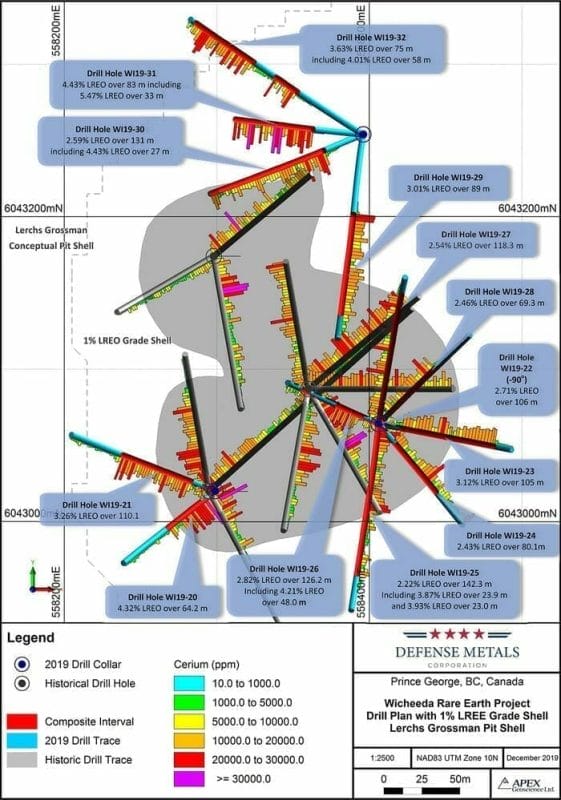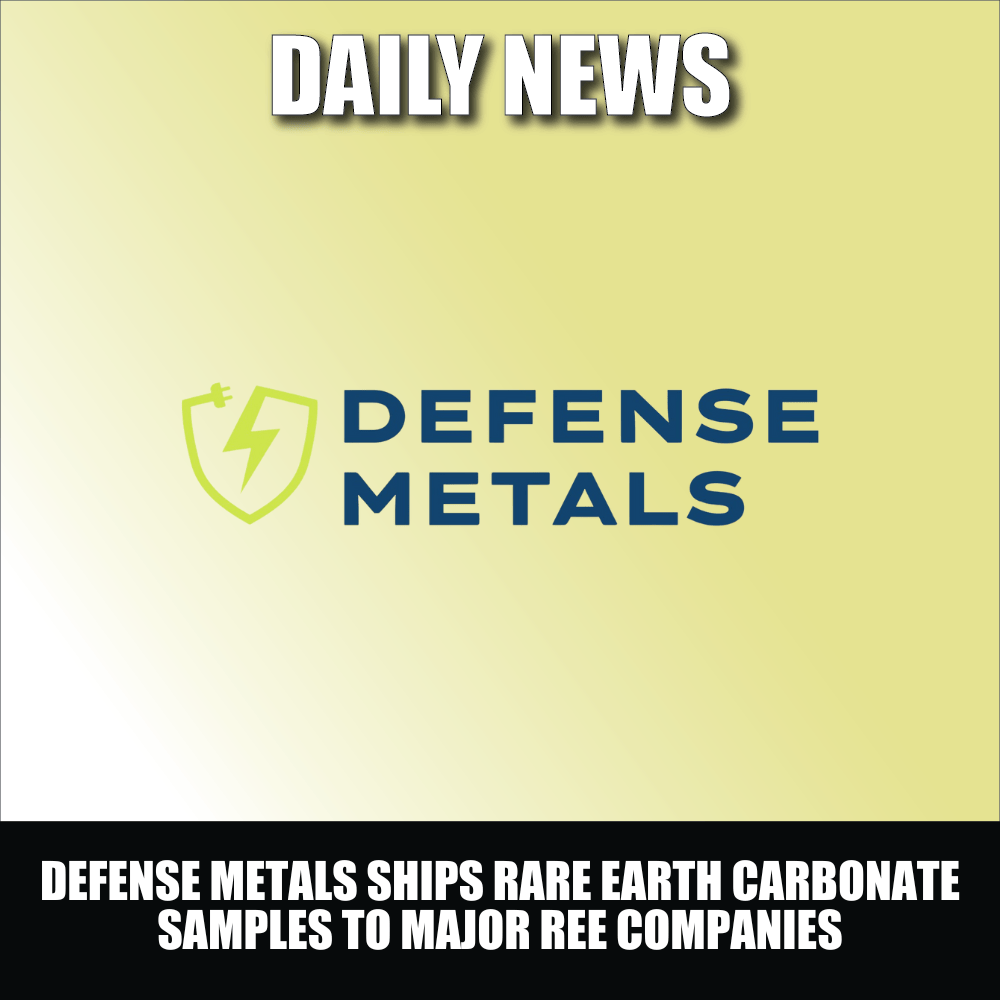On February 1, 2021 Defense Metals (DEFN.V) announced that it has received final results for the airborne survey on its 4,220-acre Wicheeda Rare Earth Element (REE) near Prince George, British Columbia.
“An airborne geophysical survey is a very useful method to investigate large areas quickly without harming the natural setting of the local environment,” states Springer Geophysics, “Mapping a large survey area with extreme topography is a very difficult and expensive task to be done by ground based geophysical and geological methods.”
“A continuous development in hardware, software and instrumentation has made resolution of airborne geophysical surveys as precise as ground based geophysical surveys,” continued Springer.
“Road accessible and surrounded by all the necessary infrastructure required to build and run an efficient operation, Wicheeda is a standout in the REE arena,” stated Equity Guru’s Greg Nolan two weeks ago.
“The Wicheeda resource currently stands at 4,890,000 tonnes grading 3.02% LREO (Light Rare Earth Oxide) in the Indicated category, and 12,100,000 tonnes grading 2.90% LREO in the Inferred category.
A successful drilling campaign completed last year (highlight interval: 4.43% LREO over 83 meters including 5.47% LREO over a drill core interval of 33 meters) may see another phase of drilling as spring approaches the BC interior.
The Wicheeda resource appears destined to grow. Note the significant mineralization tagged outside the current resource base (gray rubber ducky image, map below).

From a metallurgical standpoint, positive flotation and hydrometallurgical testwork achieved a high-grade 50% LREO concentrate at >85% recovery.
Hydrometallurgical testwork demonstrated a 90% extraction rate for REEs—a rate that could see further improvement.” End of Nolan.
The property-wide LiDAR survey data was acquired at a minimum density of 8 points-per-square-metre, in addition to high-resolution 13 cm pixel color aerial photography (Figure 1).
“This incredibly high-resolution dataset arms us with an enhanced property-wide terrain model,” stated Craig Taylor, CEO of Defense Metals, “This level of precision is expected to positively impact project development efforts with respect to numerous ongoing studies including environmental baseline monitoring, geological modelling, and resource estimation.”
Figure 1. Wicheeda REE Deposit LiDaR Bare Earth Terrain Model Showing

“REEs are crucial for high-tech manufacturing,” confirms The Verge, “These elements are produced mostly in China, and used in the US for everything from electric cars to missiles”.
The U.S. currently gets 77% of its REEs from China.
“The Critical Materials Caucus, is the latest effort by officials in Washington to blunt China’s prowess as the world’s largest producer or processor of rare earths, lithium, titanium and other niche but important minerals,” reported Mining.com.
Recent Wicheeda 43-101 Technical Report Highlights:
- 49% increase in overall tonnage of Updated Wicheeda REE Project Mineral Resource Estimate (MRE) based on the results of 2019 diamond drilling of 13 holes totaling 2,007.5 metres;
- 30% increase in overall average grade, in part though the incorporation of potentially economically significant praseodymium not previously estimated;
- Conversion of 4,890,000 tonnes to Indicated Resources previously defined as Inferred;
- Increased Inferred Resources by 730,000 tonnes in comparison to Defense Metals Initial Wicheeda MRE; and
- Potential for expansion of the Wicheeda Deposit to the north and west in the down plunge direction.

“If you have a phone, a camera or an electric car, chances are that each of these devices is wholly dependent on key minerals that, at the moment, are processed only in China,” states Stuff.co, “For much of the past two decades, this has been fine: a status quo that rewarded low-cost production in China with exports around the world.”
“The global economy was growing, more smartphones were being sold than there were people and the electric vehicle market was burgeoning
Now, as supply lines shrink, geopolitical tensions rise and the world’s dependence on these minerals for everyday use surges, policymakers are coming to terms with a gaping hole in the world’s development of rare earths that threatens to hit militaries as much as it does consumers”.
There are 472 kilograms of combined rare earths in an F-35 fighter jet and four tonnes in a Virginia-class submarine.
As well as advancing the environmental baseline monitoring, geological modelling, and resource estimation – the results of the airborne survey will help optimize the selection of locations for critical development infrastructure at the Wicheeda Rare Earth Element (REE) site.
- Lukas Kane
Full Disclosure: Defense Metals is an Equity Guru marketing client.







